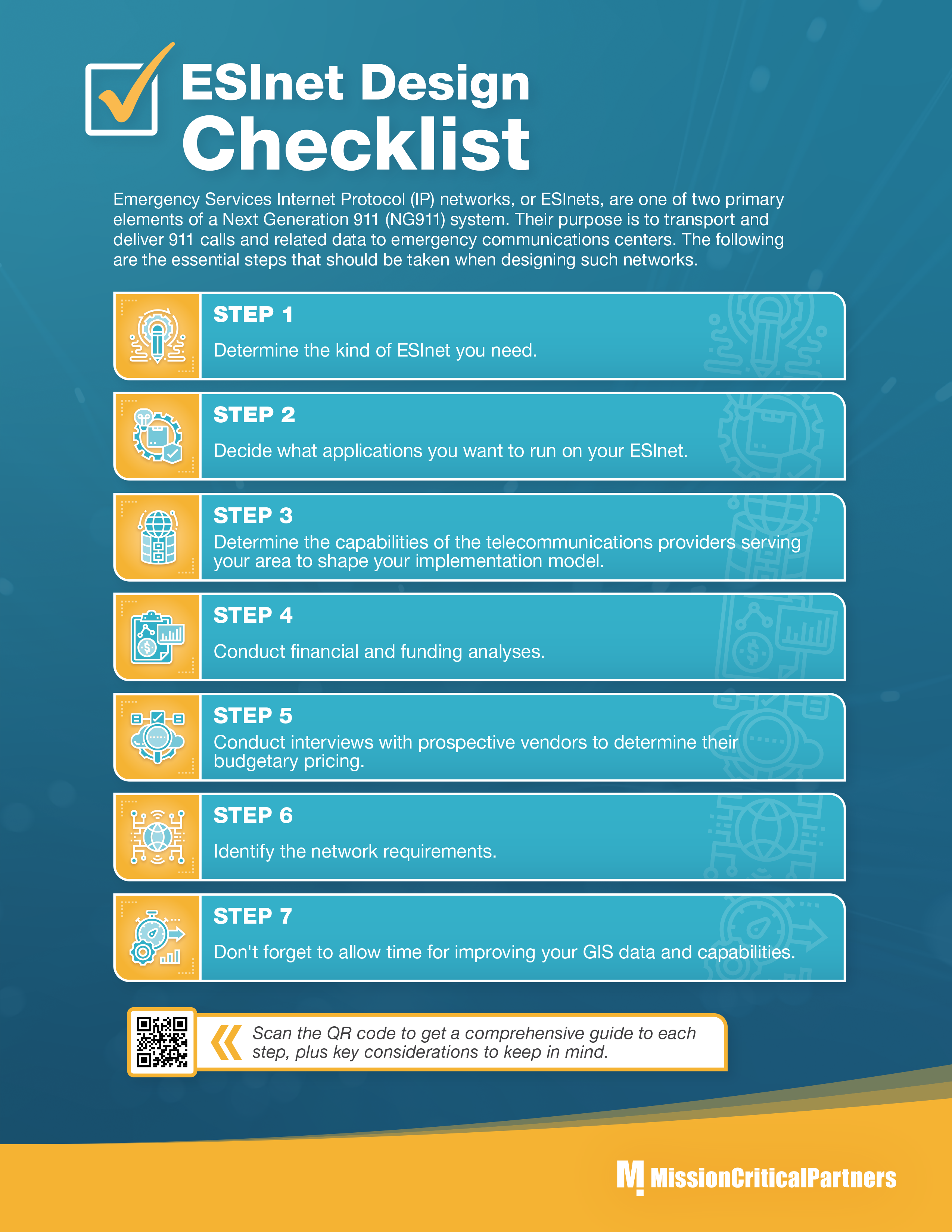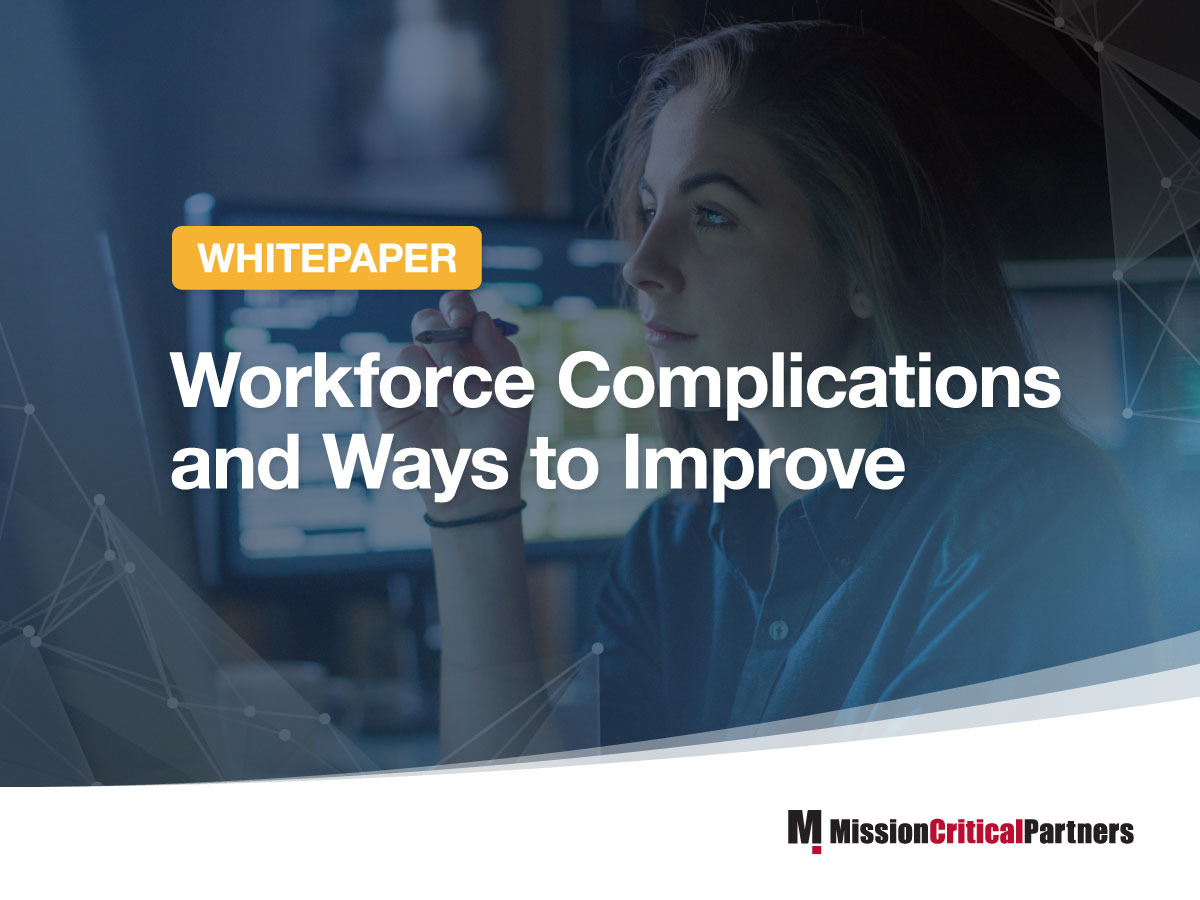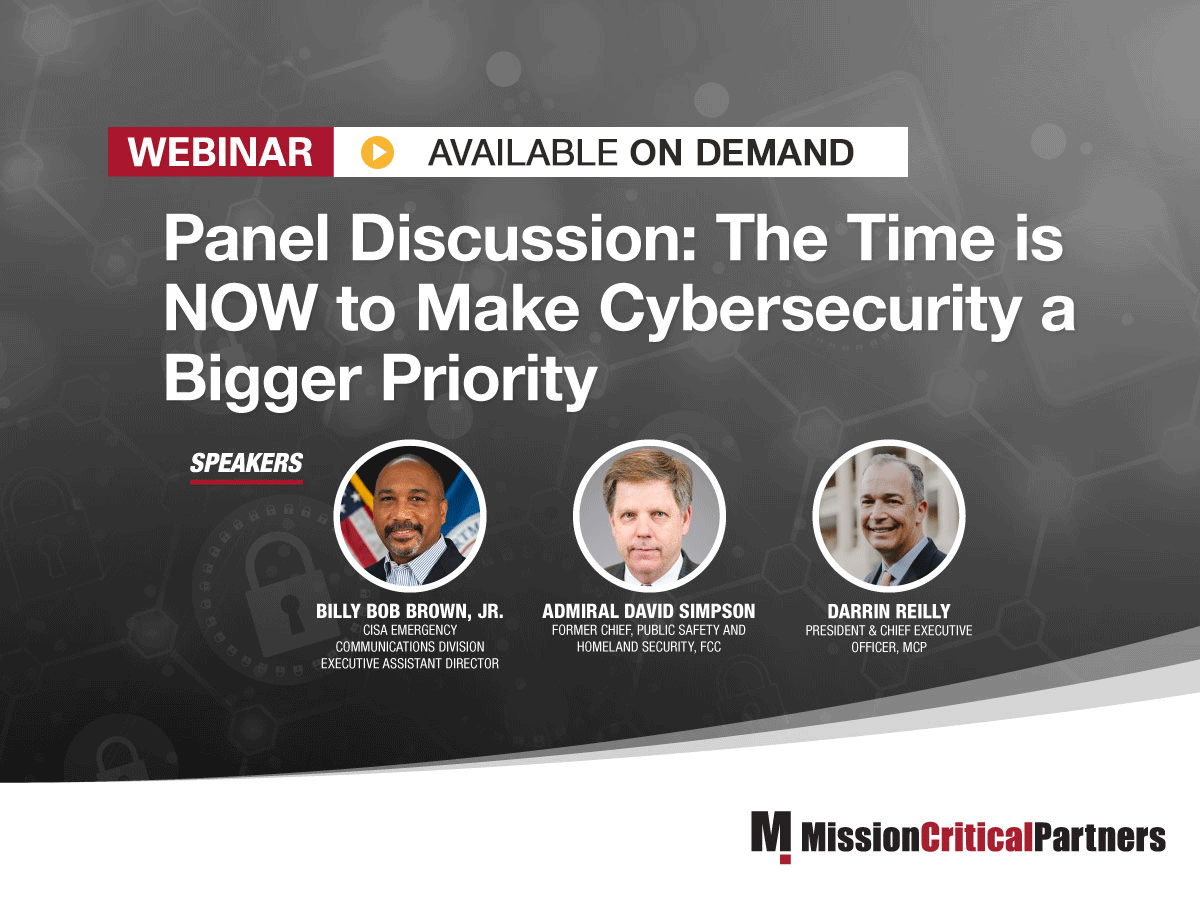Infographic: ESInet Design Checklist
ESInets are emergency services Internet Protocol networks that are used to transport and deliver 911 calls to NG911-compliant emergency communications centers. When designing such networks, the following essential steps should be taken:














